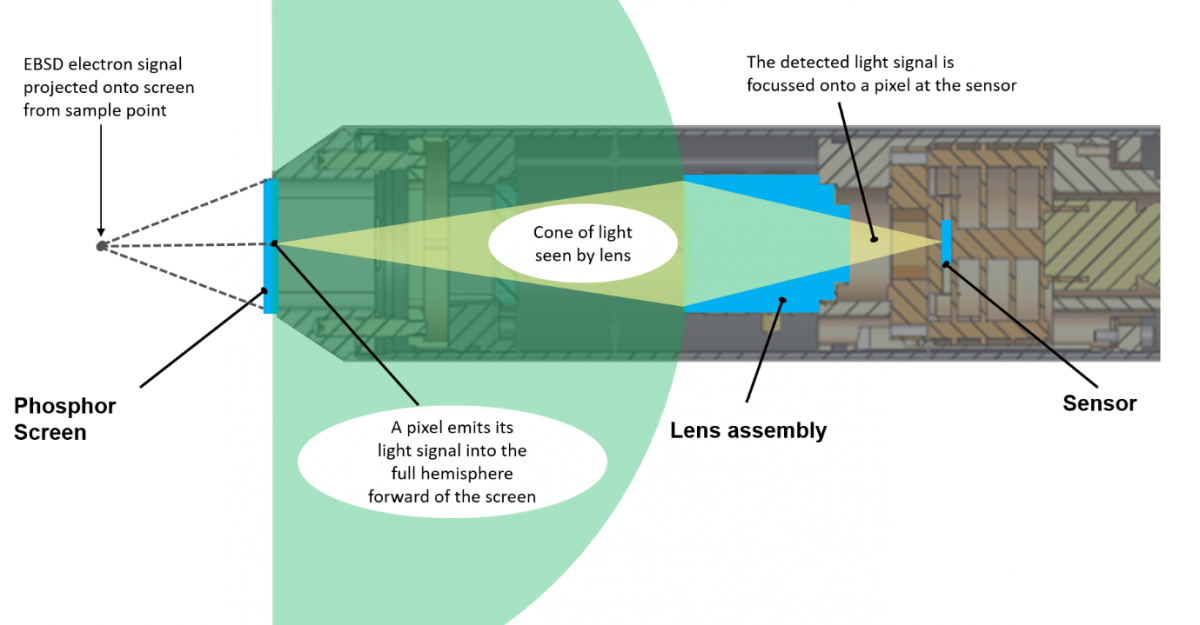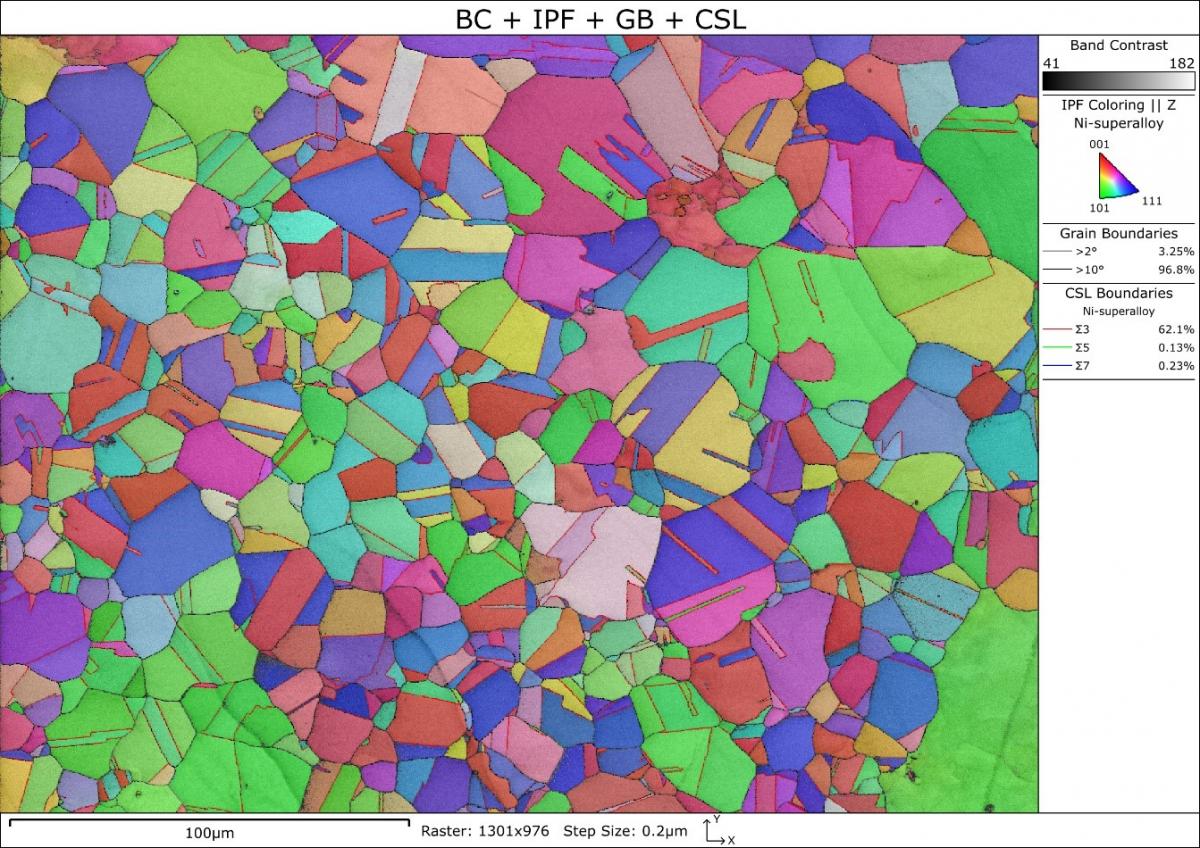产品
FIB-SEM
Nanomanipulators
OmniProbeOmniProbe Cryo软件
AZtec3DAZtecFeatureAZtec LayerProbeTEM
Hardware
EDSUltim MaxXploreImaging
软件
AZtecTEM
18th April 2019 | Author: Dr Pat Trimby
The annual Royal Microscopical Society EBSD meeting was held at the National Physical Laboratory in London at the start of April: as usual this was a hugely enjoyable meeting and a great chance to catch up with old friends and colleagues, as well as to hear more about some of the exciting new developments in the EBSD technique. It never ceases to amaze me how scientists get hooked by EBSD: many of the prominent characters were already pushing the development of EBSD when I started using the technique, 25 years ago, and I’m sure many in the current EBSD community will still be closely involved in another couple of decades’ time.
So what has changed in the last quarter of a century? In the mid 1990s EBSD was very much an emerging technique: the focus was on the exciting new approach of automated orientation mapping, yet we were hampered by unreliable indexing algorithms and poor-quality diffraction patterns. And of course it was slow. Very slow! It was not until the start of the 2000’s that digital CCD-based EBSD detectors became commercially available, and this breakthrough resulted in a significant expansion in applications, ranging from high angular resolution (HR) EBSD to 3D EBSD and, more recently, to transmission Kikuchi diffraction (TKD). These 3 approaches were still prominent in the recent RMS meeting, but we are once again in the middle of a significant upheaval in EBSD detector technology.
When, 2 years ago, we launched the ground-breaking Symmetry® EBSD detector, the switch to CMOS-based technology was met with surprise in some quarters, primarily due to the reputation of CMOS sensors to produce noisier images than their CCD equivalents. However, once people started seeing the performance of Symmetry in action, all doubts were rapidly dispelled. Not only was the detector staggeringly fast with acquisition rates routinely exceeding 3400 patterns per second (our guaranteed specification of 3000 pps is very conservative!) but users frequently commented on the quality of patterns and the overall sensitivity of the detector. How did we manage this unique balance of speed and sensitivity? The answer lies in the guts of the detector – the optics.
In a conventional EBSD detector, the greatest loss of signal is due to the lens: the vast majority of light emitted from the phosphor screen is not captured by the lens, as shown in the schematic cutaway diagram below. In fact, with a typical detector design, we lose more than 99% of the light using this inefficient design. The efficiency of conventional optics is so poor that small improvements in phosphor sensitivity or the Quantum Efficiency of the sensor itself have little effect on the overall detector sensitivity.

Figure 1. A schematic cutaway of a conventional EBSD detector, showing the extreme signal loss due to a standard lens design.
During the early stages of development of the Symmetry detector, this lens inefficiency was identified as a key stumbling block: what was the advantage of extremely high speed if huge beam currents of 30-100 nA were required? The loss of imaging resolution, the broadening of electron beam diameter (with associated loss of detail in EBSD analyses) and the likelihood of increased sample damage and contamination are all problems we encounter at these extreme currents. The answer lay in a redesign of the optics: for the first time in a commercial EBSD detector, Symmetry uses fibre optic coupling between the phosphor screen and the sensor. Fibre optics are widely used in many low-signal applications, ranging from night vision goggles to low-dose TEM cameras, and their use in the Symmetry EBSD detector represents a major breakthrough in detector sensitivity. All the light emitted from the back of the phosphor screen is now transferred directly onto Symmetry’s customised CMOS sensor, ensuring that customers only need low to moderate beam currents to achieve maximum analysis speeds. For example, the orientation map below was collected from a deformed and partially recrystallised Ni-based superalloy at 3055 pps using a beam current of just over 4 nA.

Figure 2. Orientation map (IPF-Z colouring, raw data) of a Ni-based superalloy collected using 20 kV, 4.3 nA beam conditions at 3055 patterns per second.
This exceptional sensitivity is making a dramatic impact on EBSD applications. We have customers successfully analysing beam-sensitive materials such as organic halide perovskites for the first time, whereas many others are able to routinely analyse complex, fine-grained materials at high speeds using low accelerating voltages and low beam currents of only a few nA. New, challenging EBSD applications are sure to emerge in the coming months and years.
It would seem that the EBSD community accepts that CMOS-based detectors are the best solution at present. However, next time you are viewing data collected using our Symmetry detector, remember that the unrivalled performance is not just due to the use of CMOS technology but is as much due to the unique use of fibre optics. After all, what is speed without sensitivity?
If you aren't already using our Symmetry detector, click here to find out why you should be.
We send out monthly newsletters keeping you up to date with our latest developments such as webinars, new application notes and product updates.
 公安机关备案号31010402003473
公安机关备案号31010402003473